Bluster has guard rail stanchions at the aft end of the cockpit. These were bolted through the stringer and the deck with a block beneath and above. Unfortunately, after being pushed around a bit, the water had got in and rotted the deck, so the plan was to insert a more substantial block to take the loads.
The curved and laminated piece under the edge of the deck passed very close to the horse support, and was partially cut away to make room for it. This did not allow much room to fit a block that would take potentially substantial outward loads, so the curved laminate was cut away and the curved corner moved further forward. The laminated edge was then replaced for additional strength.
The block was continued underneath the stringer at the edge of the cockpit to provide additional rigidity. On the starboard side the curved laminate was rotten, so it was completely replaced.
The deck laminates will now be replaced and blocks made to fit above and below to provide a horizontal base for the stanchion and its bolts.
While working in the cockpit I also tackled the aft bulkhead which was partially rotten, as were the boards either side of it which provide a mounting for the whipstaff bearing. Water had got in to the bulkhead by getting underneath the capping strip. Although the sections were partially glued together, there was much space between the patches of glue for rain water to find its way into.
The solid wood boards forward and aft of the plywood bulkhead were removed and discarded, and the rotten section sawn out of the central bulkhead. This, incidentally, was formed by two pieces of ply, joining on the centreline.
A piece of solid Sapelle was cut to replace the plywood section of the bulkhead, and other pieces cut to provide the boards either side of the bulkhead.
The holes for the whipstaff bearing were cut using a drill stand before fitting the wood into the boat. The pieces were then glued in place with epoxy, and clamped and screwed to try and avoid air gaps. Particular attention was paid to the upper joints where water might try to enter. The capping piece was made of one piece of timber rather than a central piece and two edge pieces as in the original.
The original backing board in the aft cabin was varnished. The new board is a nice piece of wood and I will varnish this too. The rest of the bulkhead will be painted, as before.
The slow process of removing layers of rotten or soft hull and deck laminates from around the rubbing streak on the starboard side, is now finished, with the last pieces going on today. In several places all the layers of laminates had to be replaced.
Water that had entered at the hull-deck join had sometimes also damaged the stringer behind it, and caused the mouldings to become detached. The only real damage to the stringer was where the chain plate bolts had rusted, and small sections had to be cut out and replaced. Where the mouldings had become unglued from the stringer they were just re-glued by squeezing in some epoxy. The original brass screws were all de-zinced to some extent; most broke off part way along their length or at the head. They will be backed up by a new set of stainless steel screws before replacing the rubbing strake.
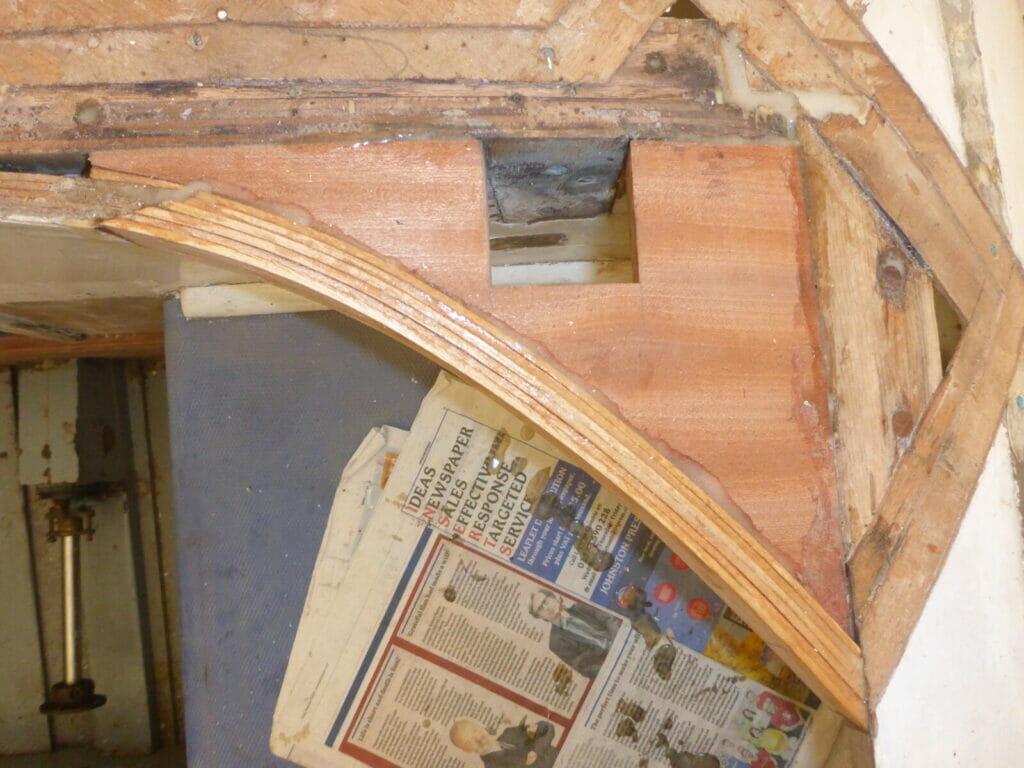
Port Aft Cockpit Corner Reinforcement
A solid block of Sapele inserted in the cockpit corner for stanchion mounting.
Underneath View of Reinforcement
The block continues under the stringer to provide more rigidity.
Starboard Corner Reinforcement
Note the complete replacement of the laminated backrest.
Aft Bulkhead Cut Away
The rotten parts of the aft bulkhead were cut away down to the level of the lower section.
New Wood for the Aft Bulkhead
The replacement piece for the bulkhead, the backing board, covering strip and part of the forward board.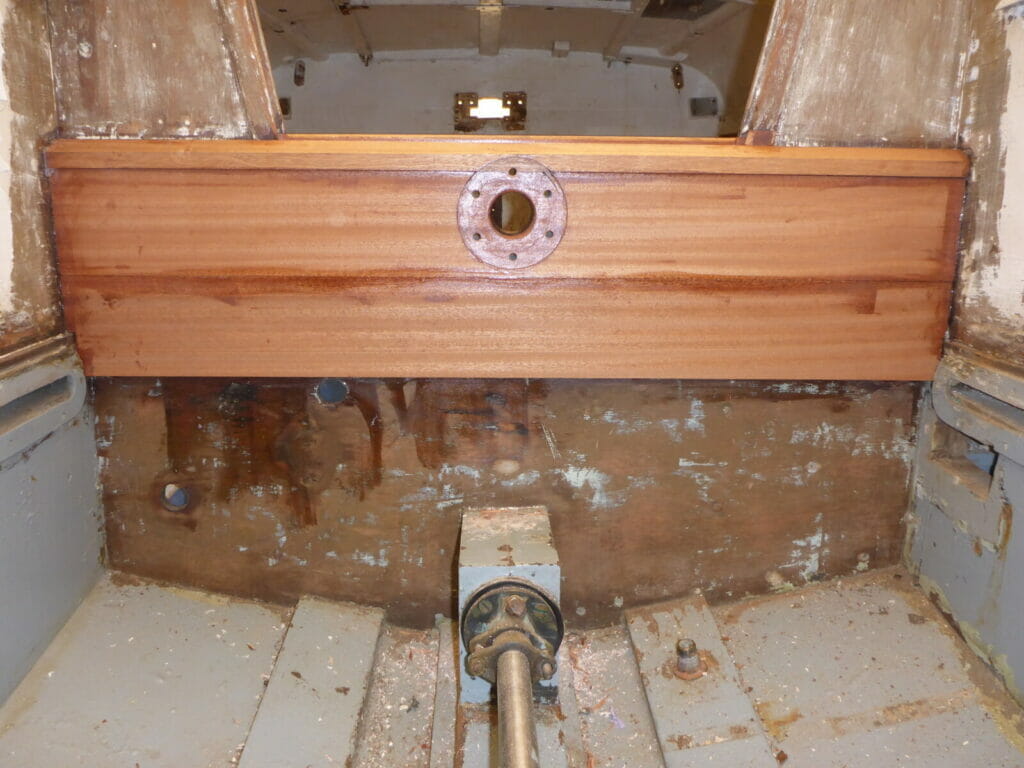
The Bulkhead In Place
The new bulkhead glued and screwed in place. The forward board is in two parts.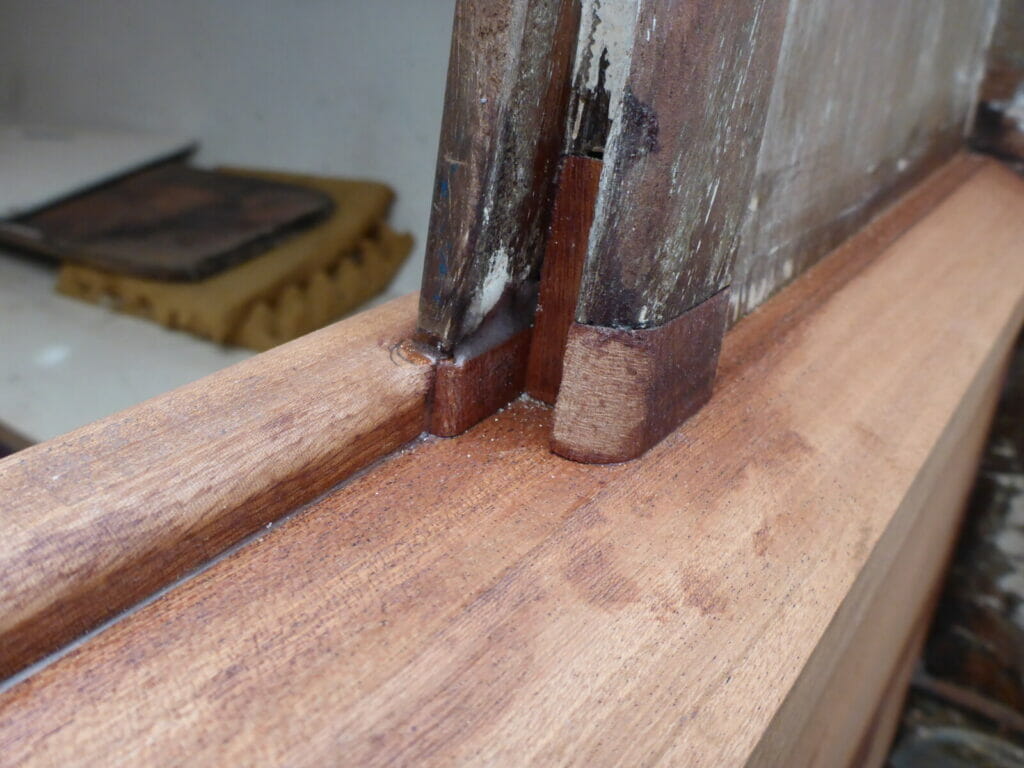
Repair to the Washboard Guides
These had rotted from the bottom and let water into the plywood bulkhead.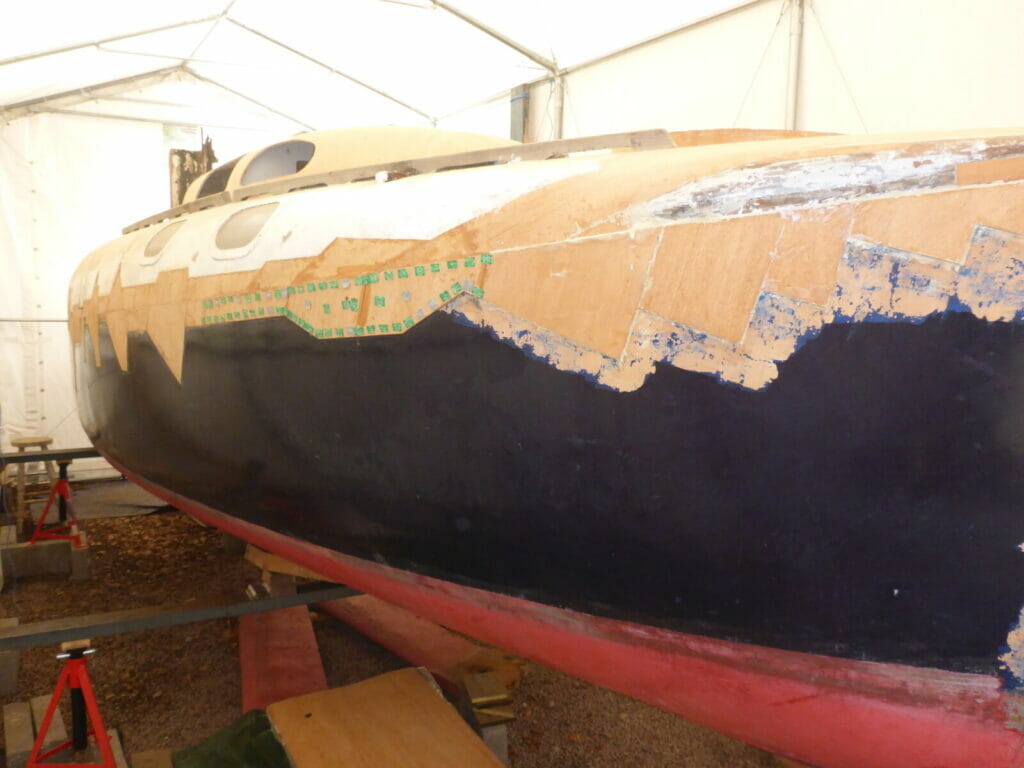
Final Repairs Under the Starboard Rubbing Strake
The rotten deck and hull laminates around the rubbing strake have now all been replaced.
Repairs Around the Chain Plates
Water had entered via the chain plate bolts and partially rotted the stringer behind the hull-deck join.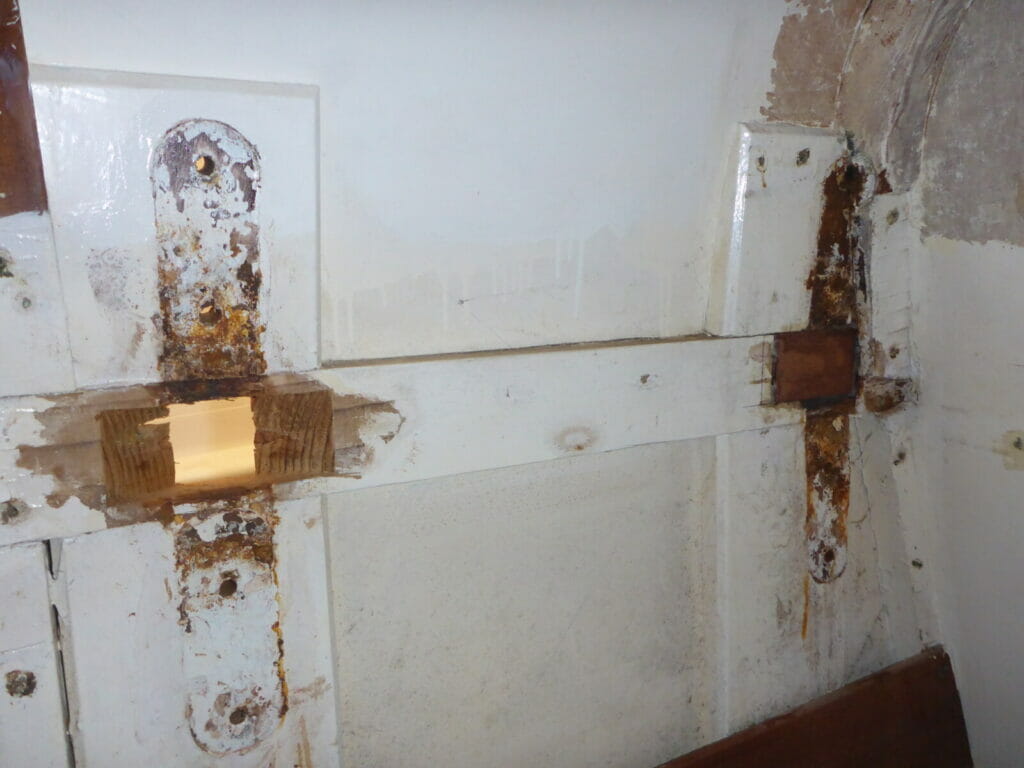
Repairs to the Stringer
Preparing to scarf new wood into the stringer where the rusted chain plate bolts passed through it.


Nick,
The chain plate fairings were all in good condition with no water ingress behind them. I only took one off because I needed to replace the laminate adjacent to it. They were glued and screwed. The main problems were caused by the rusting coachbolts damaging the wood, and on the starboard side, by water entering along the very rusted coachbolts.
Jonathan
Very thorough as always! I like your beefing up of the corner in way of the stanchion bases. The strain imposed can be high particulatly with high stanchions like Bluster’s.
And the repair to the bulkhead in way of the whip staff bearing will look great varnished.
I am intrigued by the repairs around the chainplates. The upper edge of the ‘fairing plate’ above the rubbing strake and inside the chainplate was always a concern on Helene. I think the plates were originally sealed with a ‘hard’ sealant which can crack with the working of the plates (particularly if the stays are pulled outboard during boarding). Then water can find its way down. An excellent place for good old butyl rubber, checked every winter.
Cheers
Nick
Hi Jonathan,
Thank you for posting such an interesting article of words and pictures. Really looking forward to the next instalment and eventually seeing Bluster back on the water again.